5 Powerful Steps for Introverts to Overcome One-on-One Conversation Anxiety
Do you dread one-on-one conversations, feeling your anxiety spike when the spotlight is solely on you? Overcoming one-on-one conversation anxiety is a common challenge for many, especially introverts.
As a life coach, I’ve helped many individuals navigate the challenges of these interactions. It’s common to feel nervous when having one person’s undivided attention. Managing nervousness in personal interactions is a skill that can be developed with practice.
In this article, you’ll discover practical strategies to manage and overcome conversation anxiety. We’ll explore deep breathing, topic preparation, active listening, and mindfulness practices for social situations. These confidence-building techniques for conversations can be particularly helpful for quiet individuals.
Let’s dive in and explore some introvert-friendly communication strategies.

Understanding the Impact of One-on-One Conversation Anxiety
Many introverts feel intense anxiety when facing one-on-one conversations. This anxiety can be crippling, affecting both personal and professional life. Overcoming one-on-one conversation anxiety is crucial for introverts seeking to improve their social interactions.
In my experience, people often find these interactions overwhelming because they feel exposed and judged. Even simple conversations can become daunting tasks, highlighting the need for introvert-friendly communication strategies.
For example, several clients report feeling drained after such interactions, leading to avoidance behavior. This can hinder career progression and strain relationships. Learning to manage nervousness in personal interactions is essential for introverts’ well-being.
The pain is real. The fear of awkward silences or being put on the spot can make these moments unbearable. Developing confidence-building techniques for conversations can help introverts navigate social situations more comfortably.

Your Roadmap to Overcoming One-on-One Conversation Anxiety
Overcoming one-on-one conversation anxiety requires a few key steps. Here are the main areas to focus on to make progress in managing nervousness in personal interactions.
- Practice deep breathing before conversations: Set aside time for deep breathing exercises before speaking, a key self-care routine to reduce social stress.
- Prepare conversation topics in advance: Create a list of relevant topics and practice them, using preparation techniques for one-on-one meetings.
- Focus on active listening during the interaction: Maintain eye contact and ask follow-up questions, employing introvert-friendly communication strategies.
- Start with small, low-pressure interactions: Begin with brief conversations in low-stress settings, an effective approach for overcoming one-on-one conversation anxiety.
- Use mindfulness to stay present in the moment: Practice mindfulness meditation and focus on sensory details during conversations, applying mindfulness practices for social situations.
Let’s dive in!
1: Practice deep breathing before conversations
Deep breathing can significantly reduce anxiety before one-on-one interactions, helping you stay calm and focused when overcoming one-on-one conversation anxiety.
Actionable Steps:
- Set aside 5 minutes before any conversation to practice deep breathing exercises, an effective confidence-building technique for conversations.
- Use guided meditation apps to enhance your breathing technique and ensure consistency, incorporating mindfulness practices for social situations.
- Incorporate deep breathing into your daily routine to reduce overall anxiety and improve your resilience, a key self-care routine to reduce social stress.
Explanation: Deep breathing techniques are essential because they activate your body’s relaxation response, counteracting stress. Regular practice can help you manage anxiety during conversations, allowing you to engage more confidently and is particularly useful as one of the social anxiety tips for introverts.
According to Angela Nauss, mindfulness and breathing exercises are effective strategies for managing social anxiety and overcoming one-on-one conversation anxiety.
Key benefits of deep breathing include:
- Reduced heart rate and blood pressure
- Increased oxygen flow to the brain
- Improved focus and mental clarity
Starting with deep breathing sets a solid foundation for overcoming conversation anxiety. Next, let’s explore how to prepare conversation topics in advance, an introvert-friendly communication strategy.

2: Prepare conversation topics in advance
Preparing conversation topics in advance can significantly reduce anxiety and increase your confidence during one-on-one interactions, which is crucial for overcoming one-on-one conversation anxiety.
Actionable Steps:
- Create a list of potential conversation topics relevant to the person you’ll be speaking with. Tailor these topics to shared interests or recent events, an effective preparation technique for one-on-one meetings.
- Research and note down interesting facts or questions on these topics. This preparation helps you feel more equipped and ready to engage, serving as one of the key confidence-building techniques for conversations.
- Practice discussing these topics with a friend or family member to build confidence. Role-playing these conversations can help reduce nervousness, making it an excellent strategy for managing nervousness in personal interactions.
Explanation: Preparing conversation topics in advance helps you focus on the content rather than the anxiety of speaking. This proactive approach enables smoother interactions by providing a mental roadmap, which is particularly helpful for introverts looking to overcome one-on-one conversation anxiety.
According to Hope Above All, having a list of discussion points can ease the pressure of social interactions, making them less daunting. This aligns with social anxiety tips for introverts and introvert-friendly communication strategies.
This method builds a solid foundation for confident conversations, serving as one of the small talk strategies for quiet individuals.
Next, let’s explore the importance of active listening during interactions.

3: Focus on active listening during the interaction
Active listening is crucial for overcoming one-on-one conversation anxiety and building meaningful connections.
Actionable Steps:
- Maintain eye contact and nod occasionally to show you are engaged and interested in the conversation, which is an essential body language tip for introverted people.
- Paraphrase what the other person says to ensure you understand and demonstrate that you are listening, a key confidence-building technique for conversations.
- Ask follow-up questions based on the other person’s responses to keep the conversation flowing naturally, an effective small talk strategy for quiet individuals.
Explanation: Focusing on active listening helps you stay present and reduces the pressure to come up with responses on the spot. This approach shifts your attention from your anxiety to the speaker, making the interaction smoother and is an introvert-friendly communication strategy for managing nervousness in personal interactions.
According to Hope Above All, active listening can help ease the pressure of social interactions, making them more manageable for those looking to overcome one-on-one conversation anxiety.
Practicing active listening can transform your conversations, making them more engaging and less stressful, serving as a mindfulness practice for social situations.
Next, let’s discuss starting with small, low-pressure interactions.

4: Start with small, low-pressure interactions
Starting with small, low-pressure interactions is crucial for building confidence in one-on-one conversations and overcoming one-on-one conversation anxiety.
Actionable Steps:
- Initiate short conversations with colleagues or acquaintances in relaxed settings like break rooms or casual gatherings, using introvert-friendly communication strategies.
- Gradually increase the depth and duration of these conversations as you become more comfortable with the process, helping manage nervousness in personal interactions.
- Join small group activities or clubs to practice interacting in a supportive environment where the stakes are lower, which can be effective for overcoming one-on-one conversation anxiety.
Explanation: Beginning with manageable interactions helps reduce anxiety and builds your conversation skills incrementally. This approach allows you to gain confidence without feeling overwhelmed, serving as one of the social anxiety tips for introverts.
According to Hope Above All, starting small can make social events less daunting and more manageable.
Examples of low-pressure interactions:
- Chatting with a barista while ordering coffee, practicing small talk strategies for quiet individuals
- Commenting on the weather to a neighbor, utilizing confidence-building techniques for conversations
- Asking a coworker about their weekend plans, a simple way of overcoming one-on-one conversation anxiety
These initial steps set the stage for more comfortable and confident interactions.
Next, let’s explore using mindfulness to stay present during conversations.

5: Use mindfulness to stay present in the moment
Incorporating mindfulness helps you stay grounded and reduces anxiety during one-on-one conversations, a key strategy for overcoming one-on-one conversation anxiety.
Actionable Steps:
- Practice mindfulness meditation daily to enhance your ability to stay present and focused. Commit to just a few minutes each day as part of your self-care routines to reduce social stress.
- Focus on sensory details during conversations to anchor yourself in the moment. Notice things like the texture of your chair or the sound of the other person’s voice, which are effective mindfulness practices for social situations.
- Use mindfulness apps to guide you through exercises designed for social interactions, helping you remain calm and engaged, an introvert-friendly communication strategy.
Explanation: Mindfulness techniques can transform your conversational experience by keeping your anxiety at bay. Staying present allows you to focus on the interaction without getting lost in anxious thoughts, a crucial aspect of managing nervousness in personal interactions.
According to Matthew Devine, mindfulness can effectively reduce social anxiety, making interactions less daunting. This aligns with cognitive behavioral therapy for conversation anxiety.
These mindfulness practices will help you become more comfortable and present during conversations, setting the stage for more confident interactions and serving as valuable social anxiety tips for introverts.

Partner with Alleo to Overcome One-on-One Conversation Anxiety
We’ve covered strategies to overcome one-on-one conversation anxiety. Did you know Alleo can help make this journey easier and faster for introverts seeking to manage nervousness in personal interactions?
Set up an account and create a personalized plan with Alleo for overcoming one-on-one conversation anxiety. Our AI coach offers affordable, tailored support, just like a human coach, providing introvert-friendly communication strategies and confidence-building techniques for conversations.
With full coaching sessions and a free 14-day trial, no credit card needed, you’ll receive actionable advice and personalized reminders via text and push notifications. These include small talk strategies for quiet individuals and mindfulness practices for social situations.
Ready to get started for free? Let me show you how to begin your journey in overcoming one-on-one conversation anxiety!
Step 1: Log In or Create Your Account
To begin your journey towards overcoming one-on-one conversation anxiety, Log in to your account or create a new one to access Alleo’s personalized AI coaching support.

Step 2: Choose “Building better habits and routines”
Click on “Building better habits and routines” to focus on developing consistent practices that will help you overcome conversation anxiety and build confidence in one-on-one interactions.
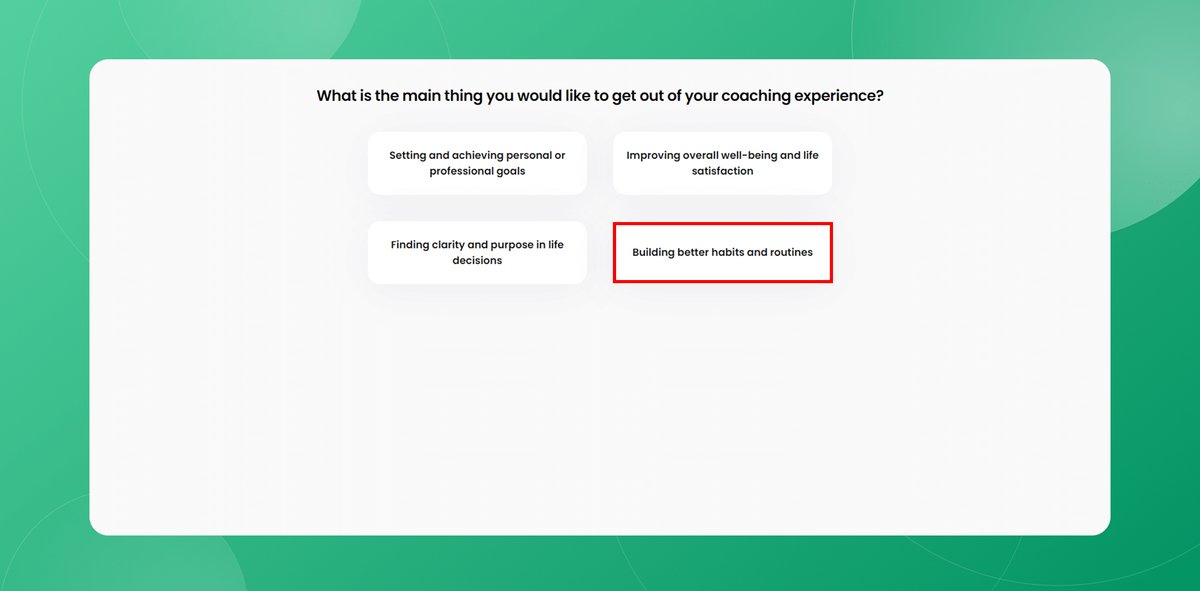
Step 3: Select “Personal” as Your Focus Area
Choose the “Personal” life area in Alleo to address your one-on-one conversation anxiety, as this will provide targeted strategies for improving your social interactions and building confidence in personal relationships.
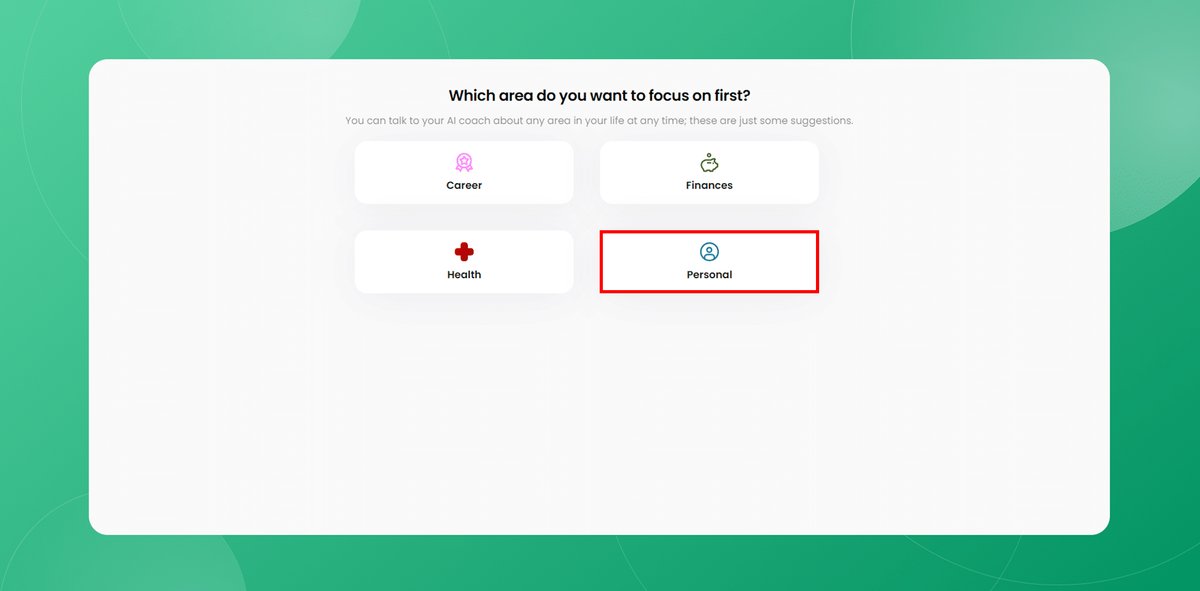
Step 4: Starting a Coaching Session
Begin your journey with Alleo by scheduling an intake session to discuss your one-on-one conversation anxiety and create a personalized plan to build your confidence in social interactions.
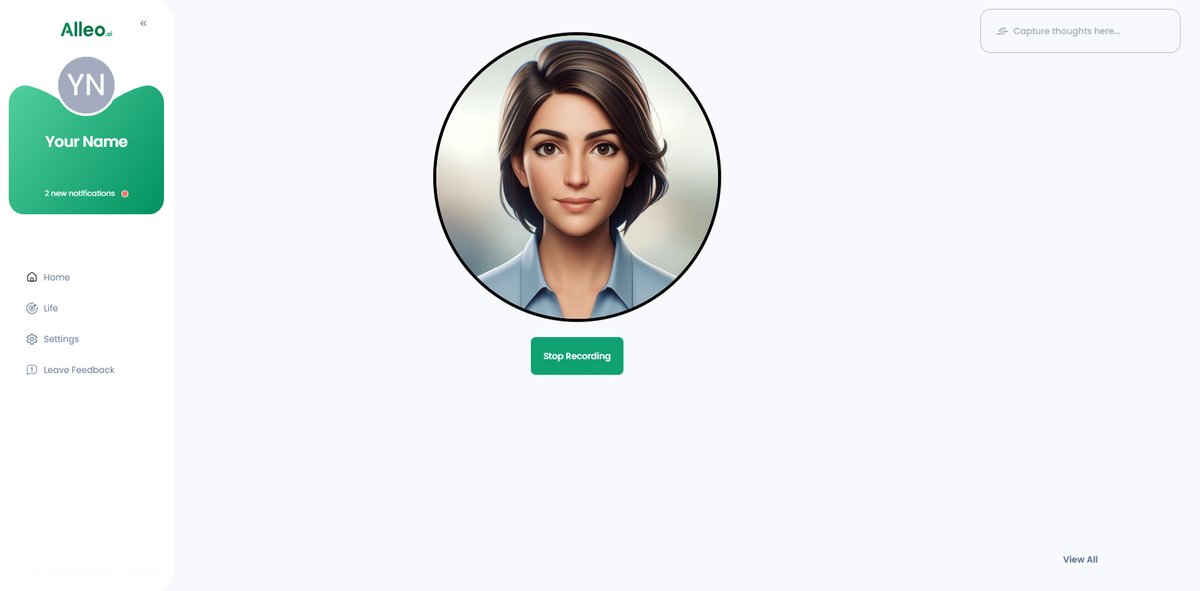
Step 5: Viewing and managing goals after the session
After your coaching session on overcoming one-on-one conversation anxiety, check the Alleo app’s home page to review and manage the personalized goals you discussed, helping you stay on track with your progress and continue building confidence in your interactions.
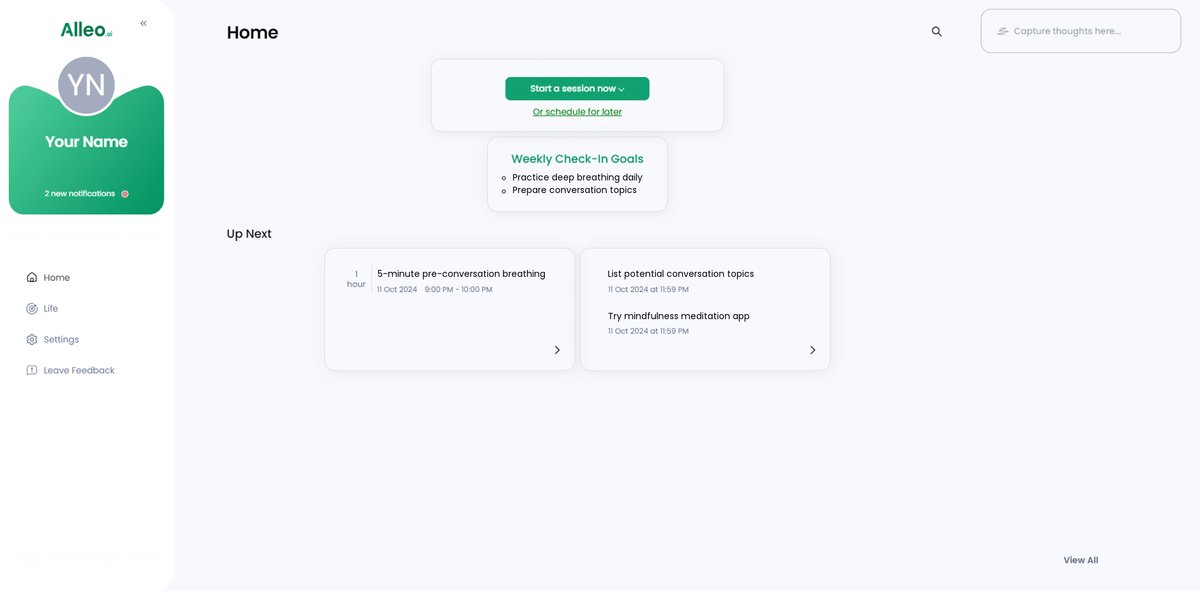
6: Add events to your calendar or app
Use Alleo’s calendar and task features to schedule your one-on-one conversations and track your progress in overcoming conversation anxiety, helping you stay accountable and motivated as you practice the strategies outlined in this article.
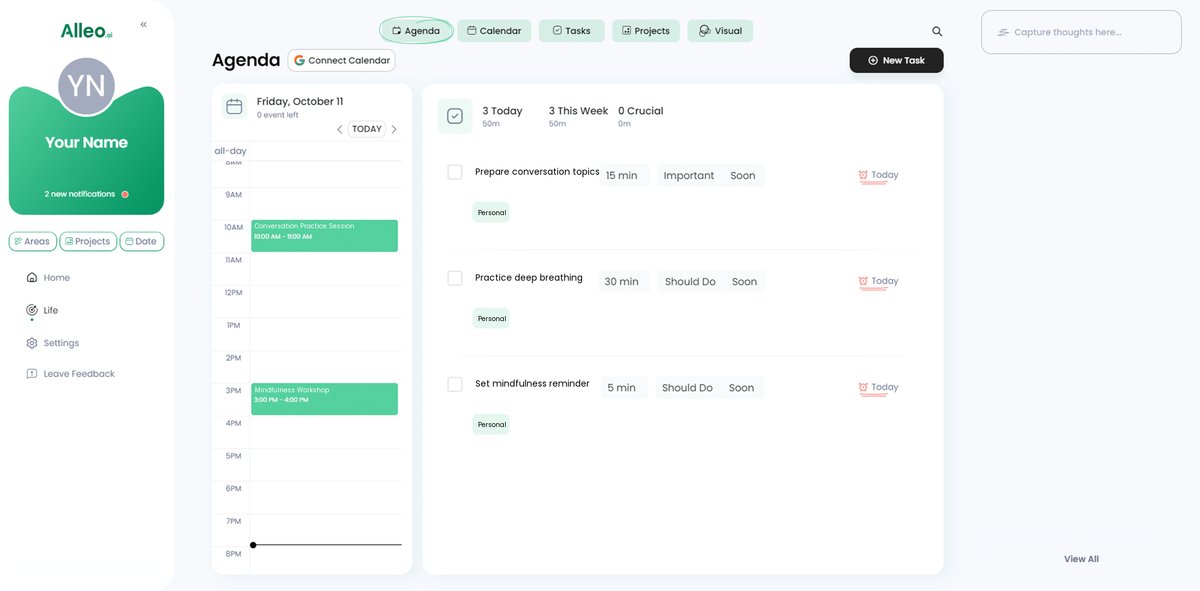
Bringing It All Together: Your Path to Confident Conversations
Implementing these strategies can make a world of difference in your interactions, especially when overcoming one-on-one conversation anxiety.
Remember, deep breathing, preparation, active listening, starting small, and mindfulness are your tools for managing nervousness in personal interactions.
Each step brings you closer to more confident conversations and effective introvert-friendly communication strategies.
I understand the struggle of social anxiety for introverts, and you’re not alone.
With practice and patience, you can overcome one-on-one conversation anxiety and develop confidence-building techniques for conversations.
Give yourself grace as you grow and explore small talk strategies for quiet individuals.
Alleo can support your journey, offering personalized advice and reminders for overcoming one-on-one conversation anxiety.
Take the first step today towards mastering body language tips for introverted people.
Try Alleo for free and start transforming your conversations now, incorporating mindfulness practices for social situations.